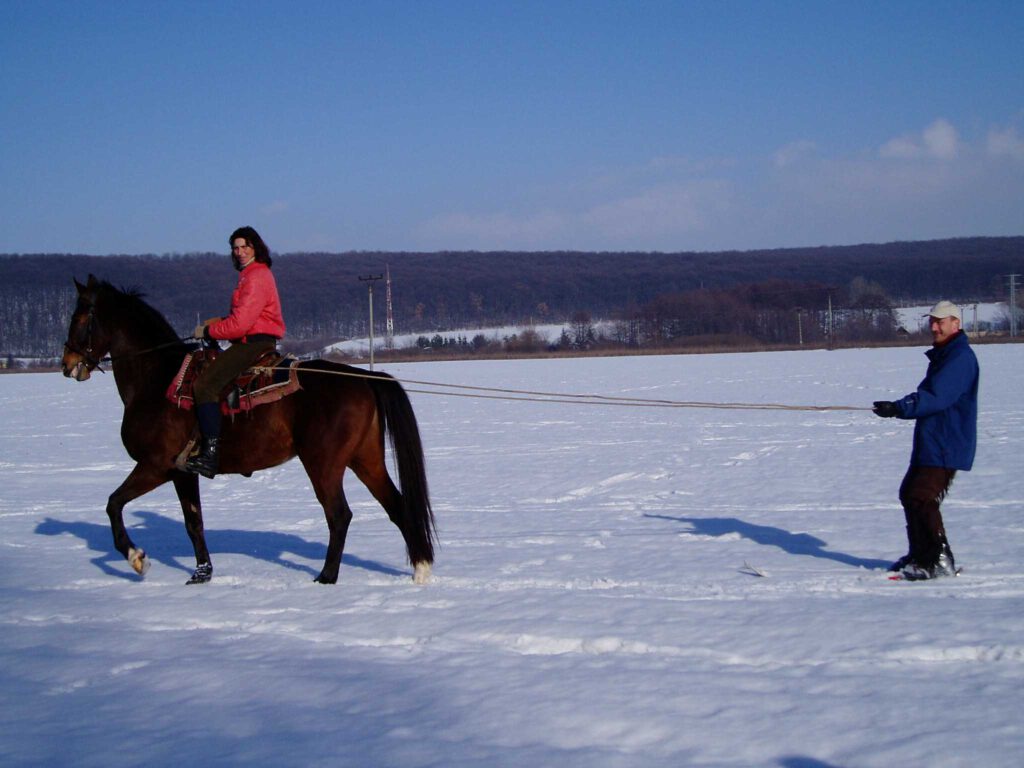The latest of the equestrian disciplines, skijoring is enjoying great success in our country. Every year, several events are organized around this sport. The equestrian tourism industry has also added skijoring to its list of activities. Skijoring originated in Scandinavia. The word means “towed ski”. In fact, the Lapps used their reindeer to pull them along on skis. The reindeer were not strong enough to carry them, or to be harnessed to a heavy sled.

The origins of skijoring
In southern Europe, it was Switzerland that made the discipline popular. The Engadine resort of Saint-Moritz has been organizing skijoring races on its frozen lake since 1906. At these meetings (which take place every year on the three weekends in February), thoroughbreds compete by towing skilled skiers far behind them. The lines are flexible and joined by an apron to prevent snow splashing.
It usually takes the driver-skiers a lap to stop their horse… The town of St. Moritz has also often incorporated other skijoring events into the program of its traditional January snow horse show. Show jumpers take part in slaloms or mini races. The horse is usually mounted, which facilitates the work of the second rider-skier.
Skijoring
In France, the discipline of skijoring was developed around ten years ago by a handful of enthusiasts. The resorts of Les Deux-Alpes and Megève were the first to organize skijoring events. French rider-skiers have developed a nylon harness with rigid stretchers that prevent the skier from overtaking the horse on descents. The rider holds onto a spreader bar to which the guides return. French skijoring events always include several events: slaloms, freestyle figures, races, etc. The discipline is now a sure success, and many professional horse-riders offer skijoring tours during the winter.
Find out more: all about skijoring


